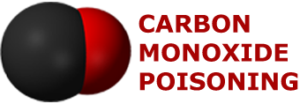FAQ: Why is Carbon Monoxide Dangerous to Humans?
Short Answer: Because CO takes the place of oxygen in the blood, starving the heart and brain cells of oxygen, which can kill you. In survivors, the toxic aspect of CO sets off the body’s immune responses, which will cause an inflammatory response which can perforate the blood brain barrier.[1]

Why is carbon monoxide dangerous? Because CO takes the place of oxygen in the blood, starving the heart and brain cells of oxygen, which can kill you.
From our carbon monoxide FAQ video podcast with Gordon Johnson and Griff Winthrop:
Gordon Johnson: Why is carbon monoxide dangerous?
Griff Winthrop: Because it causes a hypoxic event that could cause you to expire or kill you. Or it could cause permanent brain damage.
FAQ: Where does carbon monoxide come from?
Short Answer: It comes from the burning of fossil fuels, typically in gas fired appliances like furnaces, boilers and hot water heaters.
Gordon Johnson: Where does carbon monoxide come from?
Griff Winthrop: It comes from gas fired appliances. Or it comes from combustion that is incomplete.
Gordon Johnson: When you say appliances, what do you mean?
Griff Winthrop: Furnaces? Hot water heaters, boilers, combustion engines on motor vehicles. Generators are a are a big one. Anything that requires fossil fuel to operate.
For more on incomplete combustion, see our FAQ: How is carbon Monoxide Created in a Furnace which should be Burning Clean?
FAQ: How Does a Carbon Monoxide Poisoning Occur?
Short Answer: Carbon monoxide happens when high CO levels in an appliance leak into the inside air of a home, office or hotel.
Gordon Johnson: How does a carbon monoxide poisoning happen?
Griff Winthrop: There are two failures in an appliance for there to be a carbon monoxide poisoning. The first failure is the appliance has to be incompletely combusting its fuel. That creates carbon monoxide in the exhaust. But you are unlikely know that there is CO in the exhaust, as that CO should be venting outdoors.
- Unless, of course, you have a regular maintenance schedule; or
- Until the carbon monoxide somehow escapes the exhaust vent pipe.
And that’s the second failure. If the exhaust vent pipe has a breach in it, or if there’s a negative pressure condition not to get too much into the weeds if it’s flowing back out or spilling back out of the front of the appliance, that is the second failure. And that’s how you get poisoned.
[1] See Arya, et. al. Inflammatory responses to acute carbon monoxide poisoning and the role of plasma gelsolin, https://www.science.org/doi/full/10.1126/sciadv.ado9751
